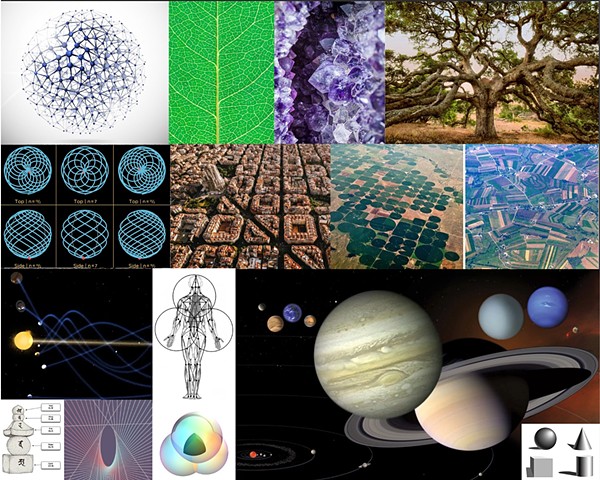Much like an alphabet, in music there are a finite number of notes with an infinite number of ways they can be arranged. Expressing vision within an ordered structure, that is art.
A physicist approaches a subject by stripping it down to its essential components in order to best understand it. If they were to examine a jazz solo, for example, they would look for an underlying algorithm, a guiding set of principles that steers the arrangement. They might examine how the notes are strung together like words and phrases, housed in a unique grammar. The jazz musician improvises from this set of principles, repeating, modifying and drinking from a well of possibility. Music is a language we relate to in a poetic way, we don’t endlessly attempt to interpret its meaning because it is so often a subjective, emotionally triggering and universal experience all in the same instant. Visual art is another language structure built on a set of underlying principles and components, in the case of geometrical abstraction, it is an alphabet made up of variations of elemental form: the sphere, cube, tetrahedron, torus, parabolic cone, etc. Operating like an elegant mathematical literature, artists arrange these forms into visual poetics. More intricate and complex compositions weave together and unfold like sonnets, short stories and novellas, slowly revealing the layered visual tapestry.
My sculpture is a method of seeing and working with form as if it operated like language. I envision form as having a code of representation just like alphabets and grammar, numbers and mathematics, notes and music, etc. I refer to elemental form as a system of units with a grammar that represents both the microscopic and macroscopic make-up of the universe, resonating in the psyche precisely because of its universality. Breaking down language and physical phenomena to their most basic elements is how I remind myself that we are all tied to every thing and every body.
